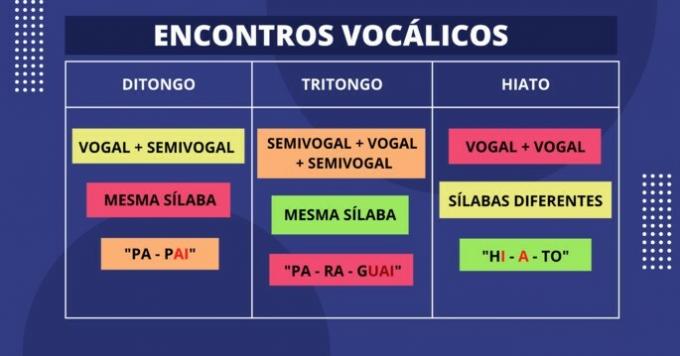Textual genres arise from the specific function of each form of communication. The textual types (typology) are the classifications given to the standard linguistic structure according to which the text is produced.
Some examples of textual genres are: letter, short story, chronicle, culinary recipe, leaflet, instruction manual, review, lists, entries, etc. Each has a common pattern to which other texts, which fulfill the same function, must fit.
Text types are: essay (argumentative or expository), descriptive, narrative and injunctive. And, a textual genre can be composed of different textual types.
A culinary recipe, for example, has a list of ingredients needed for preparation (descriptive text) and the method of preparation (injunctive text).
| Textual genres | Text types | |
|---|---|---|
| Meaning | Common characteristics present in texts that fulfill the same purpose. | Fundamental linguistic structures present in texts, classified according to their purpose and objective. |
| Examples | Short stories, chronicles, letters, e-mails, journalistic reports, lists, culinary recipes, medicine inserts, memos, notes, etc. |
|
What are Text Genres?
Text genres are particular structures that are formed from different types of text. These structures shape texts and make them assume a pattern.
The distinction between the different textual genres is based on the way in which each one fulfills its communication function, according to its purpose, establishing a standard.
It is the textual genre that makes it possible to distinguish a note or a love letter from a shopping list or a meeting minutes.
Examples of textual genres
The different forms of communication assume a pattern called textual genres. Some examples are:
- tickets
- medication inserts
- Cards
- Tales
- Chronicles
- emails
- lists
- memos
- obituaries
- cooking recipes
- journalistic reports
- seminars
- entries
What are text types?
Text typology is classified according to the structure and purpose of a text. Each type of text fulfills a function and, for that, has a specific way of enunciating and communicating.
1. essay text
Argumentative
The dissertation-argumentative text has the purpose of defending an idea. This textual type aims to persuade the reader to agree with the construction of thought and with the proposed arguments.
A dissertation-argumentative text has as its main feature the development and defense of a thesis. It has a formal structure based on:
- Introduction - Presentation of the thesis to be developed.
- Development - Presentation of arguments that reinforce the thesis.
- Conclusion - Establishment of a new context from the proposed arguments.
This textual type is the most common in writing tests such as the Enem, for example. Other genres that present this structure are: editorials, opinion letters, essays and scientific articles.
2. Expository Text
The expository-expository text is characterized by exposing information through explanation, conceptualization, comparison, etc.
Unlike the argumentative text, the expository text is not intended to persuade and lead the reader to agree with the presented thesis.
Examples of expository texts are the genres: lectures, seminars, interviews, entries in dictionaries and encyclopedias.
3. Narrative text
Narrative texts expose a relationship between characters contextualized in time and space, tell a story based on a specific point of view, the narrator's point of view.
This point of view can be developed in third person (observer narrator or omniscient narrator) or in first person (character narrator).
This type of text is found in the genres: short stories, fables, chronicles, novels, soap operas, etc.
4. Descriptive Text
Descriptive texts are intended to offer a wealth of details about an object, person, place or event. A characteristic of this type of text is the use of a large number of adjectives.
The main genres of this type of text are: diaries, travel reports, biographies, classified ads, lists, menus, news, resumes, etc.
5. Injunctive Text
Injunctive or instructional texts are intended to guide an action, they function as an order for the reader. Their main characteristic is the use of verbs in the imperative.
This textual type contains an order to the reader and excludes another mode or possibility of action. They are used to guide the completion of a task and control its results.
This is the case of textual genres: advertising, publicity, instruction manuals, medication leaflets, culinary recipes, books of rules and regulations.
See also the difference between:
- Text types
- Formal language and informal language
- Speech, language and language
- charge and cartoon

